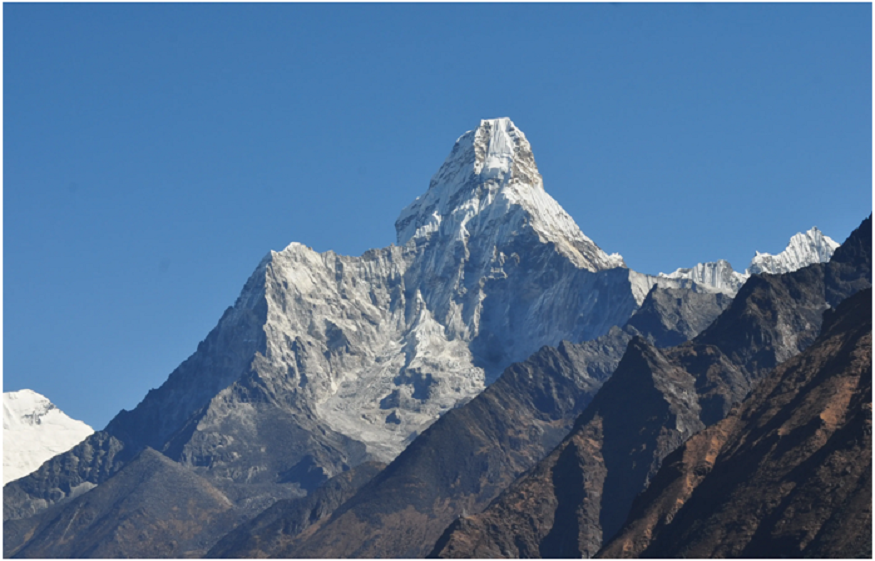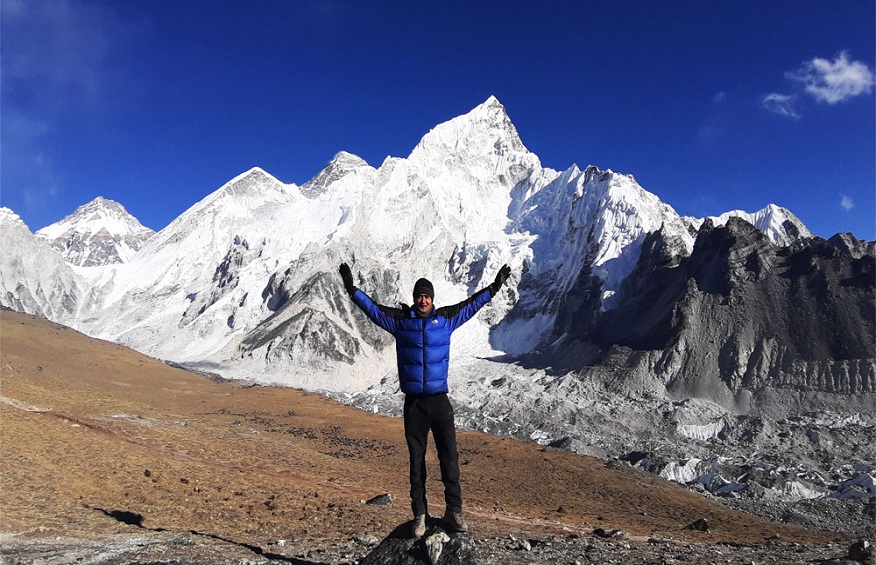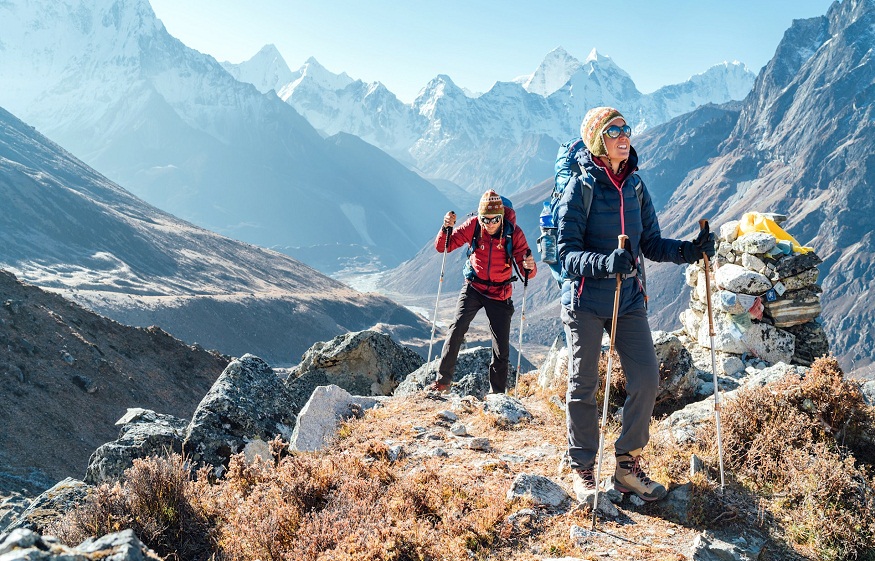High in the Himalayas, where snow whispers privileged insights of antiquated travelers and peaks penetrate the sky with solidified brilliance, lie trails that test the soul and remunerate the soul. The “White Streets to the peak” is more than fair a trekking route—it’s a transformational trek over three of Nepal’s most notorious experiences: the Everest Base Camp (EBC) trek, Island peak Climbing, and the emotional Cho La Pass trek. Each way mixes challenge and magnificence, culture and mettle, clearing out behind impressions not fair in snow, but in memory.
EBC trek: Taking after the Legend
The Everest Base Camp (EBC) trek is for visionaries, mountain rovers, and nature mates likewise. Beginning from Lukla, a modest mountain heliport that teeters on the edge of the world, pedestrians step into a sphere where solicitation banners ripple in the cold wind and yaks carry burdens over swinging islands.
As the path winds through Namche Bazaar, Tengboche, and at last to Gorak Shep, it divulges not fair sees of Everest, Lhotse, and Ama Dablam, but also the flexible culture of the Sherpa individualities Their neighborliness, otherworldly existence, and profound association with the mountains raise the travel past physical exploration.
The highlight, of course, is standing at the foot of Everest at 5,364 meters, where you share space with undertaking groups and vacillating banners. It’s not the summit, but the soul of the summit that travelers come to witness. The sheer nearness of Everest makes hearts race and eyes well with a blend of wonderment and humility.
Island peak Climbing: Touching the Sky
From the consolation of trails to the stark reality of high-altitude climbing, Island peak (Imja Tse) presents an exciting move in the Himalayan involvement. Rising to 6,189 measures, Island peak is an emotional snow- covered aggregate that shows up like an islet in an ocean of ice when seen from Dingboche — hence the name.
Island peak Climbing requires further than perseverance; it requires abecedarian mountaineering capacities, similar as the application of crampons, ropes, and tackles. After coming to Chhukung, climbers experience preparing and acclimatization some time recently heading toward the Island peak Base Camp. The course proceeds through crevassed icy masses and a soaked ice divider fair some time recently the summit ridge.
The summit day started some time recently at first light, with climbers rising by headlamps beneath the canopy of stars. At the beat, you’re welcomed by all encompassing sights of Everest, Lhotse, Nuptse, Makalu, and Baruntse—giants that encompass you in noiseless magnificence. This climb is not a physical challenge, but a mental and passionate triumph. It’s where your breath gets to be sacrosanct, your steps calculated, and the world underneath forgotten.
Cho La Pass trek: A Solidified Passage
Still, the Cho La Pass trek infuses experience in its rawest shape, If Island peak offers perpendicular radiance and the EBC conveys empirical consideration. Sitting at 5,420 meters, Cho La is a high- mountain pass that joins the Everest Base Camp path with the Gokyo Valley — a ground between two Himalayan realms.
Crossing Cho La requests exploring over elusive ice sheets, free rocks, and a frequently eccentric climate. It’s not only a pass but an icebound portal that rewards those courageous enough to handle it. Not at all like the active EBC path, Cho La brings isolation and hush, broken as it were by the crunch of your boots in the snow or the periodic thunder of an icefall.
Trekkers regularly rise from Dzongla, climbing soak frigid slants, some time recently coming to the best decorated with supplication banners and jaw-dropping vistas. The plummet leads toward Thagnak, and in the long run into the Gokyo Valley, celebrated for its turquoise lakes and Gokyo Ri, a vantage point rivaling Kala Patthar.
Cho La isn’t for the faint-hearted, but for those who march its way, it gets to be a highlight of the whole Himalayan trek.
The Travel Past Altitude
What ties these three experiences—EBC, Island peak, and Cho La—is not their peakographical vicinity, but the passionate bend they make. The EBC trek builds establishment and respect. Island peak touches off desire and resolve. Cho La tests strength and adaptability.
Throughout the travel, the scenes advance from rich pine woodlands to desolate elevated zones, from cold moraines to vertical ice dividers. But indeed as the landscape changes, the sense of ponder remains consistent. The white streets are unforgiving however illuminating. They strip you of consolation but clothe you in insight.
Cultural Experiences in the Khumbu
Beyond the mountains, the soul of the Khumbu locale is found in its individuals. Each halt offers a chance to interface with Sherpa families, taste custom made yak butter tea, turn a supplication wheel, or tune in to a Lama’s favoring. The religious communities at Tengboche or Pangboche resound with chants that have watched these mountains for centuries.
Festivals like Dumji or Mani Rimdu offer a blast of colors and customs. These are not traveler exhibitions, but living conventions, as profound as the valleys and tall as the peaks. They remind trekkers that the Himalayas are not purge wild but sacrosanct homelands.
Challenges and Triumphs
Success in this set of three treks does not come effortlessly. Height affliction, changing climate, and physical fatigue are genuine dangers. Preparing, appropriate acclimatization, and guided bolster are fundamental. However each challenge gets to be a lesson.
When your legs throb at Kala Patthar, your heart finds delight in Everest’s to begin with light.
When the ice divider on Island peak threatens you, your boldness fixes the harness.
When Cho La’s snow squall stings your face, your resolve keeps you moving forward.
These are not fair white streets of snow and ice—they are representations for pushing limits, grasping instability, and finding qualities you didn’t know you had.
Conclusion: The Beat Is Fair the Beginning
“White Streets to the Beat” is not almost a single summit but a composite adventure—a set of three treks that combine to make a life-altering travel. EBC gives you the organizer, Island peak the climax, and Cho La the startling bend. Together, they rethink what it implies to travel, to climb, and to grow.
For those who look for more than a trek, who need a trek of scenes, societies, and internal change, the Himalayas offer this uncommon combination. Take after these white streets. Lose yourself in their quiet. And when you reach the beat, know that the genuine climb has fairly begun—in your heart, in your story, and in the way you presently see the world.



